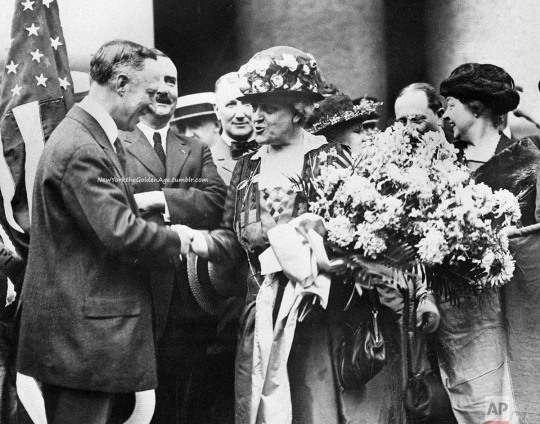#august 27
Photo


𝙰𝚞𝚐𝚞𝚜𝚝 𝟸𝟽, 𝟷𝟿𝟷𝟼
𝚃𝚑𝚎 𝙳𝚒𝚊𝚛𝚒𝚎𝚜 𝙾𝚏 𝙵𝚛𝚊𝚗𝚣 𝙺𝚊𝚏𝚔𝚊, 𝟷𝟿𝟷𝟺-𝟷𝟿𝟸𝟹
[ID: start seeing what you are instead of calculating what you should become. END ID]
#kafka#franz kafka#literature#quotes#academia#dark academia#daily kafka#the diaries of franz kafka#quote#dailykafka#q#excerpt#august#august 27
3K notes
·
View notes
Text

— August 27, 1916 / Franz Kafka diaries
#he is talking to himself here#August 27#august#1916#franz kafka#daily kafka#franz kafka diaries#quotes#alt text
290 notes
·
View notes
Text


Got my hair cut a couple days ago to start off my holidays, so very happy with it :) My stylist gifted it to me, so may as well show y'all the first gift I got :) Don't show my face much here, shit self-esteem does that. (I have Ko.Fi here if y'all want to get me a cake lol)
It's year 42 for me today, and you know what? I'm the happiest I've been in a long time. I've still got a mountain of issues, stress and just all around "being me"-ness, but I think today will be a good day <3
181 notes
·
View notes
Text


Fittings for Venice last year 🔥💨🔥💨
IG credit to h.a (Haider Ackermann)
#timothee chalamet#he got a little swole on us#venice international film festival#venice#timothée chalamet#august 27#haider ackermann
203 notes
·
View notes
Text
On this day, August 27
In 2022: My Chemical Romance performed their 27th show of the 2022-2023 Swarm tour in Elmont, New York, USA. At this show an unreleased song (titled "Everybody Hates the Eagles" on the paper setlist) was performed for the second time ever, with new lyrics. Gerard Way wore an inside out grey t-shirt with green camo print mini shorts and a clear plastic eye mask, and "GET IN THE CHAIR" was written on the drums. (🖤)
Watch the show here!

DAVID ZECK
230 notes
·
View notes
Text

Former NY Governor Alfred E. Smith welcomes Carrie Chapman Catt, women's suffrage leader, on her triumphal return from Tennessee, August 27, 1920. Tennessee was the last state to ratify the 19th Amendment, giving women the right to vote. Miss Catt carries a bouquet of blue and yellow flowers, colors of the National American Woman's Suffrage Association.
Photo: Associated Press
#vintage New York#1920s#Carrie Chapman Catt#women's suffrage#19th Amendment#suffrage#suffragist#August 27#27 August#Al Smith#27 Aug.#Aug. 27#triumph#Constitutional amendment#right to vote
119 notes
·
View notes
Text
Happy 3rd Birthday to
“How to Start a Fire (except don't...)”
116 notes
·
View notes
Text

La Mode illustrée, no. 35, 27 août 1922, Paris. Ville de Paris / Bibliothèque Forney
#La Mode illustrée#20th century#1920s#1922#on this day#August 27#periodical#fashion#fashion plate#cover#color#Forney#dress#flowers#train
70 notes
·
View notes
Text




8/27/23-🔥💥🔥💥🔥
113 notes
·
View notes
Text

August 27: Happy Birthday Aoi Tategami / Cure Gelato (Pretty Cure)!!!!
#aoi tategami#tategami aoi#cure gelato#pretty cure#precure#happy birthday#august 27#27 august#fuck this post and happy birthday
41 notes
·
View notes
Text
The Death of John Laurens: A Summarized Account of August 26th and 27th, 1782
Sources and links to said sources will be listed at the end of this post in Chicago format. This post is purely for educational purposes and is not meant to be used in any research, citations, or criticism of other works or individuals. Please refer back to the list of sources if you intend to use this material in a similar fashion.
What happened on the evening of August 26th, 1782, and the morning following? This was the eve of the death of John Laurens and the events that would occur on the morning on the 27th would go on to be recognized as incomplete, like a puzzle missing some pieces. However, after some recent diving into the topic and looking into letters from Nathanael Greene, Mordecai Gist, and others describing Laurens’ “gallant fall”, I will be presenting a summary and compilation of this information to paint an unfortunate night in an incomplete fashion. There are still things that remain unclear to me, but this may provide some clarity on those who are unaware of what happened.
To set the scene, Tar Bluff, the Combahee Ferry, and the Combahee River in South Carolina is a mix of two sets of scenery in the present day. Nearer to the river and the flatter land, it is thick marshland and difficult to travel through. This is why the ferry was so necessary and useful and likely why the British commandeered it. The drier land higher than the marsh was primarily deciduous and coniferous trees that covered muddy and sandy ground with leaves and pine needles. Today, the area is very dense and overgrown along the riverbanks due to the nature of the region and its climate. It is uncertain what the weather at the time of this engagement might have been, but by referring back to lunar calendars, it is deductible that the night of the 26th-27th was a waning gibbous; the moon would be mostly full but not entirely so and would continue to cast less light in the coming days. Furthermore, it is important to mention that the location that is mentioned that Laurens had been staying and later buried at was roughly thirty-seven miles from where the engagement against the Regulars occurred. Gist mentioned that the main encampment he had made was twelve miles north of Chehaw Neck and roughly fifty miles away from Greene's main headquarters outside of Charleston.
The British were commanded by Major William Brereton and reportedly one-hundred and forty men strong consisting of the British 64th Regiment and volunteers from the British 17th Regiment. The 64th Regiment had been in other engagements where Laurens was present also, including the battles of Brandywine and Germantown as well as the much later and much more influential Siege of Charleston in 1780. This was not the end of the 64th engaging against Laurens as they were reportedly at the Siege of Yorktown and surrendered with the body of men under General Cornwallis’s command.
On the days leading up to the 27th, Gist remarked that an enemy fleet of British regulars had taken the command of the Combahee Ferry and both sides had been locked in a stalemate regarding the waters due to the circumstances: the Patriots could not engage the enemy due to the ships in the river, and the Regulars could not get their supplies north and across the Combahee because the Patriots were patrolling the area. Gist, with a combined might of over three-hundred men consisting of the 3rd and 4th Virginia Regiments under the command of Colonel Baylor, the Delaware Regiment, one-hundred infantry of the line commanded by Major Beale, the entirety of the command under Lt. Col. John Laurens, and all of which was under the command of General Gist.
It’s important to mention before continuing that despite much research into the matter of Laurens’ illness on the evening and morning of the 26th and 27th, myself and other partners in researching [the esteemed @pr0fess0r-b1tch] could not find a reputable source mentioning directly that John Laurens was ill. Gregory D. Massey does not explicitly mention a source in his book, but instead says,
“From his sickbed, Laurens learned of Gist’s orders. He forwarded the latest news to headquarters and added a query…”
Other sources we found mentioned that many of the northern regiments and men were falling ill, even some doctors themselves, but there is not a primary source that lists that Laurens was sick or bedridden aside from Massey and the sources that pull from his accounts including the Wikipedia of Laurens and the American Battlefield Trust. Because of this oversight, I am choosing to redact the concept of Laurens’ illness until otherwise proven by a primary source whether it be a letter or other statements.
Laurens was given the command of the men under Gist by General Greene and despite not being well-liked by the men who were formerly under Light Horse Harry Lee’s command, it was theoretically remedied by the intermediary of Major Beale. On the night of the 26th, Brigadier General Mordecai Gist recounted in a letter to Major General Nathanael Greene that “Lt. Col. Laurens arrived in the intermediate time, that solicited the direction and command at that post”, the post being that Gist had ordered an earthworks to be constructed at Chehaw Neck to “annoy their shipping on their return”. In the evening that Laurens took command and oversight, Gist sent fifty men to be under his command with some Matrosses and a Howitzer. Laurens, in command of these men, were stationed on the northern bank of the river.
The commanding officer of the British, Major Brereton, evidently received information of this movement of the Howitzer to the earthworks within the day that such a motion was ordered. The quick intelligence may allude to an inside source that the British had or a matter of good reconnaissance, but Major Brereton left in the ships at two in the morning and “dropped silently down the river”, according to General Gist. These movements went undiscovered until four in the morning when patrols noticed and alerted the extended body led by Laurens. It is stated that the troops were then “put into motion to prevent their landing”. Gist then mentions that before he could arrive and defend the efforts, the British had successfully landed and engaged Laurens directly. The men scattered when Laurens fell, but Gist regathered them within the quarter mile, following which the enemy forces reboarded the boats and left.
According to a Delaware Captain, William McKennan, under Laurens’ command, Laurens was “anxious to attack the enemy” before the main body and Gist’s reinforcements arrived. McKennan says,
“being in his native state, and at the head of troops…were sufficient to enable him to gain a laurel for his brow…but wanted to do all himself, and have all the honor.”
After Laurens had been injured in three other battles, Brandywine, Germantown, and Coosawatchie, and having his pride wounded at losses most notably the loss of Charleston in 1780, it would be understandable that he would be so willing to return to the fight for his nation after being detached and moved frequently in the later years of the war. McKennan’s account states in the same paragraph that Laurens was killed in the first volley of the attack by Brereton’s men. Some sources say that Laurens was upon a horse when he fell and was mortally wounded, but others suggest that he may have merely been standing in the enemy fire. All appear to agree that Laurens was one of the first victims of the enemy volleys. Whether he died upon the first impact is unknown, but his body was abandoned until Gist could regroup the men and return to the site to gather an understanding of who was killed and wounded in the action.
Following the death of a notable officer, statesman, and diplomat, many men would come to regard Laurens as an incredibly accomplished and noteworthy young man and officer. Greene writes in an August 29th letter to General Washington,
“Colo. Laurens’s fall is glorious, but his fate is much to be lamented. Your Excellency has lost a valuable Aid de Camp, the Army a brave Officer, and the public a worthy and patriotic Citizen.”
In “The Delaware Regiment in the Revolution” where McKennan’s recollection of events can be found, it states,
“In the fall and death of Colonel John La[urens], the army lost one of its brightest ornaments, his country one of its most devoted patriots, his native State one of its most amiable and honored sons, and the Delaware detachment a father, brother, and friend.”
Gist’s letter to Greene on the day of the 27th says that “that brave and gallant officer fell, much regretted and lamented.” Alexander Hamilton, a fellow aide, close friend, and alleged lover, remarks in a letter to General Greene on October the 12th, 1782, over a month since Laurens’ passing,
“I feel the deepest affliction at the news we have just received of the loss of our dear and inestimable friend Laurens. His career of virtue is at an end. How strangely are human affairs conducted, that so many excellent qualities could not ensure a more happy fate? The world will feel the loss of a man who has left few like him behind, and America of a citizen whose heart realized that patriotism of which others only talk. I feel the loss of a friend I truly and most tenderly loved, and one of a very small number.”
As for how his own father, Henry Laurens, reacted to the news, a pair of letters and brief segments from them may very well put it into perspective of how not only close friends, but a good number of men felt about the death of Laurens. On November 6th, 1782 from John Adams to Henry Laurens:
“I know not how to mention, the melancholly Intelligence by this Vessell, which affects you so tenderly.— I feel for you, more than I can or ought to express.— Our Country has lost its most promising Character, in a manner however, that was worthy of her Cause.— I can Say nothing more to you, but that you have much greater Reason to Say in this Case, as a Duke of ormond said of an Earl of Ossory. ‘I would not exchange my son for any living Son in the World.’”
In a return letter to Adams from Henry Laurens dated November 12th, 1782:
“My Country enjoins & condescends to desire, I must therefore, also at all hazards to myself obey & comply. Diffident as I am of my own Abilities, I shall as speedily as possible proceed & join my Colleagues. For the rest, the Wound is deep, but I apply to myself the consolation which I administered to the Father, of the Brave Colonel Parker. ‘Thank God I had a Son who dared to die in defence of his Country.’”
~~~
I would like to send a huge thank you to @butoridesvirescens for instigating this rabbit hole that we went down and @pr0fess0r-b1tch for being my research partner and assisting in transcriptions. I appreciate the work done by both of them.
Sources
“Combahee River .” Combahee River Battle Facts and Summary . Accessed February 20, 2024. https://www.battlefields.org/learn/revolutionary-war/battles/combahee-river.
“From Alexander Hamilton to Major General Nathanael Greene, [12 October 1782],” Founders Online, National Archives, https://founders.archives.gov/documents/Hamilton/01-03-02-0090. [Original source: The Papers of Alexander Hamilton, vol. 3, 1782–1786, ed. Harold C. Syrett. New York: Columbia University Press, 1962, pp. 183–184.]
“To George Washington from Nathanael Greene, 29 August 1782,” Founders Online, National Archives, https://founders.archives.gov/documents/Washington/99-01-02-09304.
“From John Adams to Henry Laurens, 6 November 1782,” Founders Online, National Archives, https://founders.archives.gov/documents/Adams/06-14-02-0013. [Original source: The Adams Papers, Papers of John Adams, vol. 14, October 1782–May 1783, ed. Gregg L. Lint, C. James Taylor, Hobson Woodward, Margaret A. Hogan, Mary T. Claffey, Sara B. Sikes, and Judith S. Graham. Cambridge, MA: Harvard University Press, 2008, pp. 25–26.]
“To John Adams from Henry Laurens, 12 November 1782,” Founders Online, National Archives, https://founders.archives.gov/documents/Adams/06-14-02-0029. [Original source: The Adams Papers, Papers of John Adams, vol. 14, October 1782–May 1783, ed. Gregg L. Lint, C. James Taylor, Hobson Woodward, Margaret A. Hogan, Mary T. Claffey, Sara B. Sikes, and Judith S. Graham. Cambridge, MA: Harvard University Press, 2008, pp. 56–57.]
Bennett, C. P., and Wm. Hemphill Jones. “The Delaware Regiment in the Revolution.” The Pennsylvania Magazine of History and Biography 9, no. 4 (1886): 451–62. http://www.jstor.org/stable/20084730.
Cook, Hugh (1970). The North Staffordshire Regiment (The Prince of Wales's). Famous Regiments. London: Leo Cooper.
George Washington Papers, Series 4, General Correspondence: Mordecai Gist to Nathanael Greene, with Copy; with Letter from William D. Beall on Casualties. 1782. Manuscript/Mixed Material. https://www.loc.gov/item/mgw431868/.
Johnson, William. 1822. Sketches of the Life and Correspondence of Nathanael Greene, Vol. II: 339.
Massey, Gregory D. 2015. John Laurens and the American Revolution. Columbia: University Of South Carolina Press. Pages 225-227.
#john laurens#mordecai gist#nathanael greene#amrev#compilation#research#self researched#history#sources#american revolution#the fall of john laurens#august 27#william mckennan#gregory d. massey#alexander hamilton#john adams#henry laurens#“The Delaware Regiment in the Revolution” 1886#founders online#library of congress#summarized accounts
12 notes
·
View notes
Photo


𝙰𝚞𝚐𝚞𝚜𝚝 𝟸𝟽, 𝟷𝟿𝟷𝟼
𝚃𝚑𝚎 𝙳𝚒𝚊𝚛𝚒𝚎𝚜 𝙾𝚏 𝙵𝚛𝚊𝚗𝚣 𝙺𝚊𝚏𝚔𝚊, 𝟷𝟿𝟷𝟺-𝟷𝟿𝟸𝟹
[ID: What is left? Never again degrade yourself to the point where you become the battleground of a struggle that goes on with no regard as it were for you, and of which you feel nothing but the terrible blows of the warriors. Rise up, then. Mend your ways, escape officialdom, start seeing what you are instead of calculating what you should become. END ID]
#kafka#franz kafka#literature#quotes#academia#dark academia#daily kafka#the diaries of franz kafka#quote#dailykafka#q#excerpt#august#august 27
849 notes
·
View notes
Photo

341 notes
·
View notes
Note

Happy Birthday, Steph! Thank you for all the hard work! I wanted to bake a proper cake for you but there's a heatwave 🤣, so I made this mousse thingy with colors from blueberries and squid ink. Have fun at the Capital Pride! Please share some photos with us from the frontline if it's not too much trouble.
OH MY GOD LOVELY!!!! I WANT THAT!!! I LOVE IT OMG!!!! :D
Thank you so much!!!!
And I will!! I'm going to the parade at one, and checking out the Sunday events after, but I'm usually tired by 4 so I'll probably just head home after that lol. They have concerts all night tonight but I have 0 energy these days hahha! I'm combining it with my normal Sunday 4 hour walks, so I'll be very tired hahah!! <3
And I will and I should lol. :)
26 notes
·
View notes
Photo

American soldiers and YMCA women gather for a song at Aix-le-Bains, France, August 27, 1918.
Record Group 111: Records of the Office of the Chief Signal Officer
Series: Photographs of American Military Activities
Image description: About two dozen American soldiers and two women are gathered around a piano. One man is playing, and several people have their mouths open in song.
26 notes
·
View notes
Text

Aug 27th 1980 - Identical twins, Kermit and Fozzie, are fired from The Daily Chronicle after failing to report on the theft of Lady Holiday's jewels.
23 notes
·
View notes